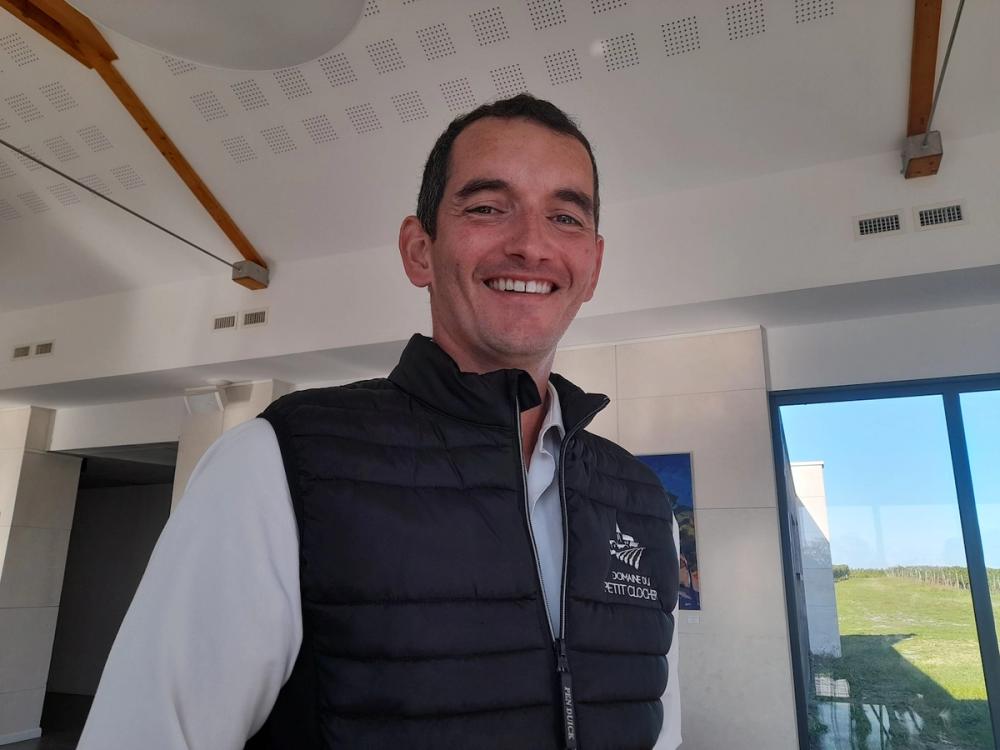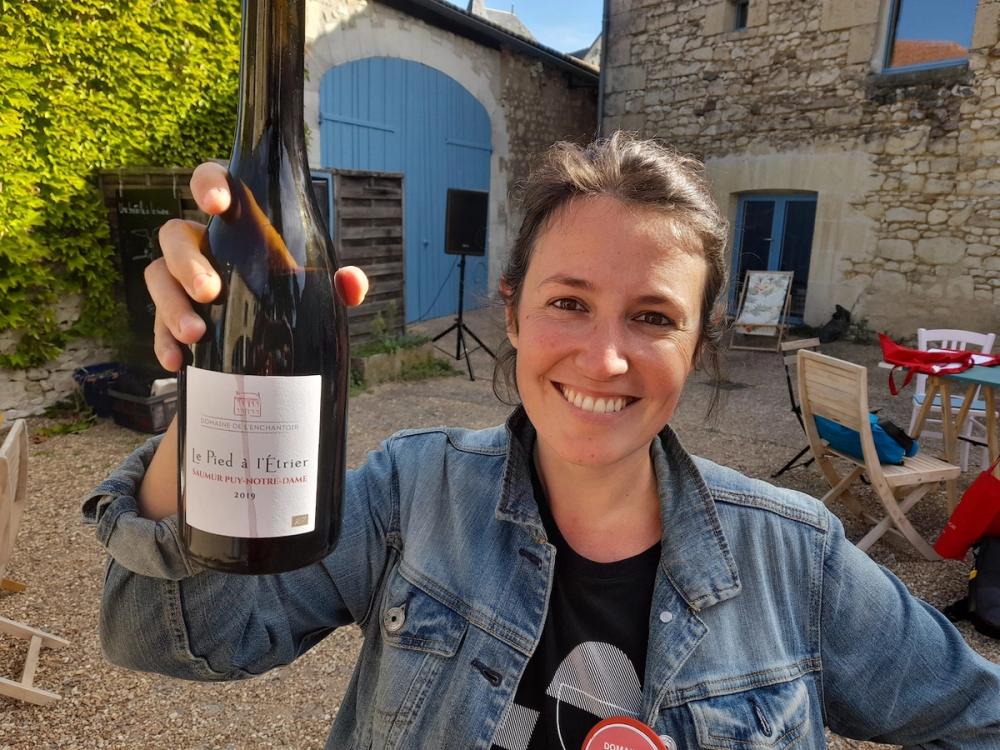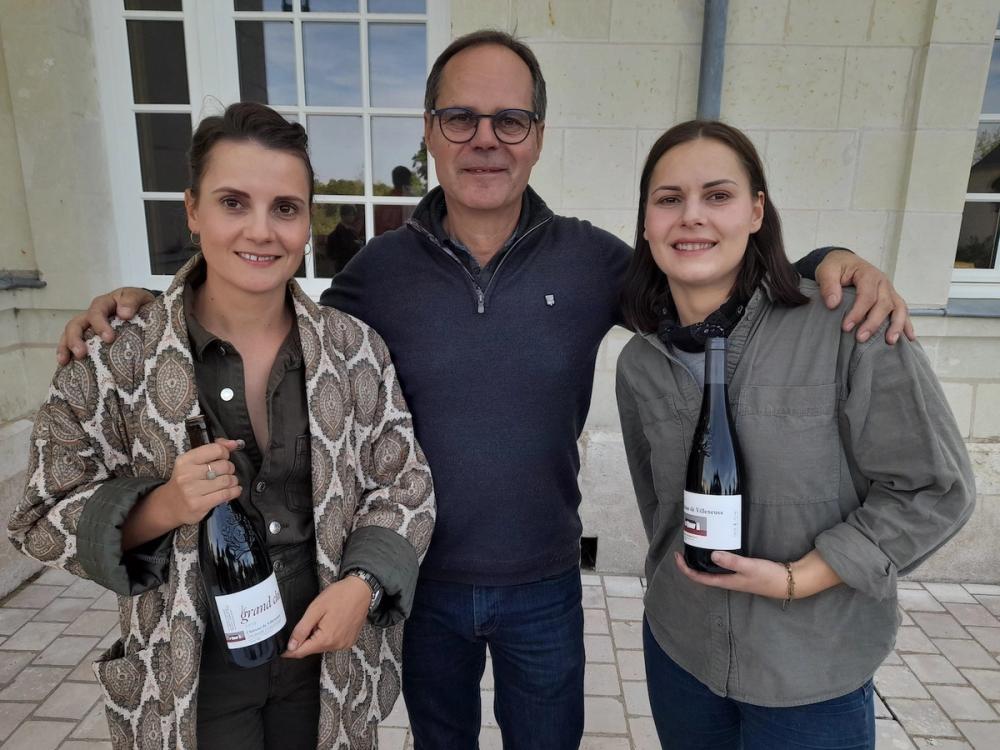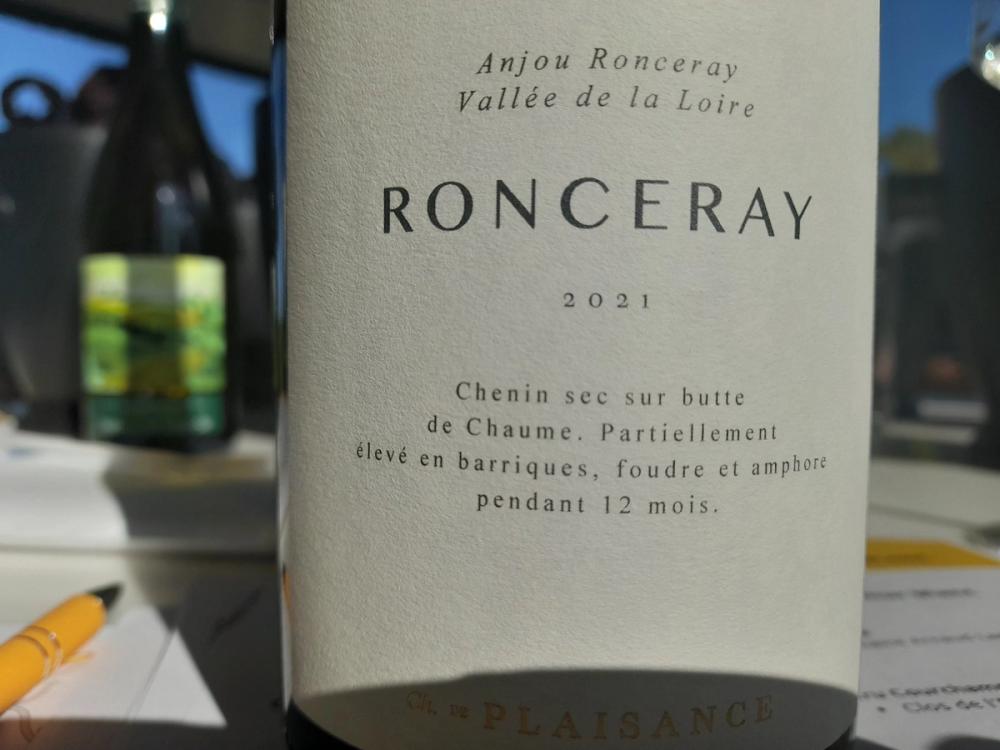“Adaptability and sustainability remain the Loire Valley’s twin watchwords in the battle against climate change,” writes Dean.

Aiming high: Loire Valley Wines’ ad for the US and UK – its two largest export markets
“Go On! Bloom Big” is the motto of the new Loire Valley Wines advert that consumers in the UK and USA will be seeing, or may already have seen. A pair of smiling, glamorous women are embracing two happy-looking men with four Val de Loire bottles in the foreground – a red, a white, a rosé and a Crémant. The rationale is all about winning market share and increasing volume in the two countries.
Another ad, with a younger mixed quintet of twenty-somethings quietly picnicking with the same wines, carries a less exuberant motto of “The Blooming Notes.” This more ‘gentle’ treatment, as Vins du Val de Loire describes it, fits in with a strategy for its next three biggest markets – Canada, Belgium and Australia – aimed at consolidating sales there.
The two ads are part of an imaginatively creative marketing concept called ‘Bloom Up!’ – created in conjunction with Sopexa – that will run until 2026. “It’s a concept,” we are told, “that uses gentleness, generosity and authenticity to express the distinctive accessible personality of Loire Valley wines: fresh, fruity, floral and fair.”
If some might find that a bit waffly, the alliteration in the form of the 4 Fs is catchy. The first three adjectives speak for themselves in the Loire’s wines, while the fourth – ‘fair’ – could be interpreted to refer to the very high number of the region’s wineries that farm organically and biodynamically, or are HVE certified. Indeed, the Loire leads the way in that respect in France’s classic regions, with 2030 targeted as the year by which 100% of the valley’s vineyards will be either HVE (Haute Valeur Environmentale), or organically, certified.
Already, 29% of estates and 23% of vineyard surface areas (11,000 hectares) are being organically farmed in the Loire Valley with 1,100 of those hectares certified biodynamic. Add in HVE-environmentally certified vineyards, and you have as much as 80% of the valley holding HVE or AB (organic) status. By contrast, under the National Wine Sector Plan for France as a whole, the target is 50% by 2025 for organic/environmental certification.
In 2022, 42,000 hectares of vines yielded more than 54 million bottles, with exports finding their way to as many as 150 countries. Most of the 53,000 hl that British drinkers bought in 2022 was white wine (69%) with the balance split equally between Crémants (15.7%) and reds/rosés (15.3%). Touraine Blanc, Muscadet and Crémant in that order were the biggest sellers in the UK.

Julienne Fournier, winemaker for Domaine FL
Muscadet’s reputation pushing higher
Half of all Muscadet exported goes to the UK, mostly to supermarkets, but on a trip to the Loire in October, an eye-opening tasting of wines from Muscadet’s new cru system underlined the potential high quality of extended lees-aged Melon de Bourgogne (or Melon B as Burgundians have had it re-christened). Seven of the nominated 10 Muscadet crus communaux have been approved by INAO – Clisson, Gorges and Le Pallet (in 2011) and Monnières-Saint Fiacre, Château Thébaud, Goulaine and Mouzillon-Tillières (in 2019). The trio awaiting recognition – La Haye Fouassière, Vallet and Champtoceaux – hope to receive it by 2025.
Effectively qualifying for premier cru status in Muscadet, the ten growths are raising the bar. Yields must not exceed 45 hl/ha, vines must be 10-years old and wines must be aged much longer on the lees than other Muscadets (a minimum of two years with no maximum). The Château Thébaud cru wines must do at least three years, and frequently see 48 months ageing.
Different soils in the crus lead to differences in style. Clisson, the most southerly and perhaps the best-known cru, sits on sandy and pebbly free-draining terrain with granitic subsoil; by contrast, Gorges lies on clay over gabbro. The former’s grapes ripen more and typically lead to flamboyant, fuller-bodied and higher alcohol (13% abv) wines than the latter’s, whose wines (nearer 12%) are steelier with a shrill line of acidity. An analogy might be ‘Meursault meets Chablis’. Château Thébaud, meanwhile, whose soils are stony and sandy on granite and gneiss, produces wines with tension, elegance and a slightly saline finish.
Jérome Houssin, a fifth generation winemaker whose family have owned Domaine des Tilleuls in the Vallet cru since 1905, exports his wines to Wine & Earth in Guildford, and to York Wines.
“The UK is a key market where I want to increase sales,” he said. “It’s about pushing the reputation of Muscadet higher and the prices as well. The value for money is great – my vines are up to 80 years old. Long ago some Muscadet was not planted in perfect terroir but the grape can really reflect terroir if you take good care of it. Before, too much chemical products were used. Now it’s all about producing in a more eco friendly way.”

“We are now ready to get cru status,” Vincent Denis, president of the Anjou AOC
Changing fortunes of Chenin Blanc
Some 60km north-east of Vallet lies the beautiful rolling terrain of the Savennières appellation, and prime Chenin Blanc territory. Its president, and owner of Domaine du Closel, Evelyne de Pontbriand, explained how the landscape there encouraged organic farming.
“All around Savennières we have 17 chateaux and 17 parks, and only a population of 1400,” she said. “This belt of parks is a very important reservoir for biodiversity, especially as some parks are not well-maintained. We also have little valleys called ‘coulées’ with a lot of bush, and hedges and trees in the vineyards. Bats love it and eat the moths. This has encouraged a lot of winemakers to become organic as there is no need for insecticides.”
Organic farming also predominates next door in the celebrated sweet wine-producing appellations of Quarts de Chaume Grand Cru AOC and Coteaux du Layon 1er Cru Chaume. Ivan Massonat, president of the former appellation and owner of Domaine Belargus, nevertheless has a love-hate relationship with Chenin Blanc. “Chenin Blanc is a difficult grape like Pinot Noir – it can be a pain in the backside to grow and vinify,” he sighed.
“But on the schist we have here and in Savennières, Chenin has some bitterness, which brings a lot of balance to sweet wines. Cabernet Franc used to be all that was planted here, although now it’s 60%. It was only at the end of the 20th century that a generation of growers said ‘Hang on we have a great variety in Chenin Blanc.’ So they went organic and prolonged the ageing. It’s a revolution, a renaissance.”
Whereas Cabernet Franc hates hydric stress, Chenin Blanc copes well with it. This was a problem in the very hot year of 2022 in the Loire (but not 2023) and can lead to unwanted green bell pepper notes in Cabernet Franc. In view of global warming, Chenin Blanc is well placed to take advantage, and Vincent Denis, president of the Anjou AOC, says demand for it is rapidly rising.
“Many customers are asking more and more for it,” revealed Denis, whose Domaine du Petit Clocher wines are imported by the Oxford Wine Company. “Our project is to create a cru, to increase the knowledge of Anjou Blanc in general. We have 14 crus in Anjou, such as Quarts de Chaume and Bonnezeaux, but we need one for Anjou Blanc in our quest for quality. INAO has visited us twice to check progress, and we are now ready to get cru status although we must still present to the commission.”

Built on dinosaur soil: Amandine Brunet, co-owner of Domaine de L’Enchantoir
Cabernet Franc and investment in research
Saumur Puy-Notre-Dame AOC received its official recognition back in 2008, and is a notable appellation for high quality Cabernet Franc. “We have amazing soil in Puy-Notre-Dame,” says Amandine Brunet, co-owner of Domaine de L’Enchantoir. “It is mostly ancient soil from the Jurassic period – we call it our dinosaur soil. A blend of red and yellow clay with flint and iron. It gives lightness to the wine.”
The neighbouring appellation of Saumur Champigny is likewise home to a plethora of outstanding Cabernet Franc producers. Particularly impressive were the wines of Château de Villeneuve, made from 45-50 year old organically-farmed vines. Owner Jean-Pierre Chevallier’s daughter, Caroline, who honed her skills for three years at Bordeaux’s Pichon Baron, makes the wines while sister Cecile heads up sales.

Jean-Pierre Chevallier & daughters Cecile (l) and Caroline
Currently, the Loire Valley exports just over 20% of production. “By 2030, we will gladly share 30% throughout the world,” declared Lionel Gosseaume, president of InterLoire, the trade organisation representing the wine region. “We owe this international recognition of the quality of our wines to the continual innovation carried out by an entire wine-growing region and a growing generation of producers.”
InterLoire is playing its part by investing in an innovative new tool the body calls the ‘agroclimatic atlas.’ Designed in partnership with a regional research team, its app shows the projected changes in climatic and agroclimatic indicators. It allows producers to identify vulnerabilities within their vines and adapt viticulture accordingly. Indeed, adaptability and sustainability remain the Loire Valley’s twin watchwords in the battle against climate change.
10 wines that impressed on my tour

Damien & Vincent Papin, Cru Clisson 2018, Muscadet Sèvre et Maine AOC
From an outstanding vintage in Muscadet. Shows how well its cru communal wines can age. Full-bodied with rich tropical fruit expressions; taut acidity balances 13% abv. Long finish (seeking UK distribution).
Domaine des Tilleuls, Cru Vallet 2018, Muscadet Sèvre et Maine AOC
Rich yet elegant with a highly expressive floral nose and intense citrus fruit (Wine & Earth/York Wines).
Domaine du Closel, Clos du Papillon 2021, Savennières AOC 2021
From 45-year old biodynamically-farmed vines on schist and volcanic rocks, yielding 25hl/ha; elevage in 420l oak vessels (25% new); cordite minerality with roundness from 100% malolactic fermentation (Ideal Wine Company).
Domaine FL [Fournier & Longchamps] 2015, Quarts de Chaume Grand Cru AOC
100% botrytised fruit; 5 tris; 190g/l residual sugar balanced by vibrant adidity; 11.2%; gloriously rich and remarkably long (Vinatis).

Château de Plaisance, Chenin Sec 2021, Cru Ronceray, Anjou Blanc AOC
Freshness, intensity and length. Superb (Lea & Sandeman).
Château Soucherie, Blanc Ivoire 2021, Anjou Blanc AOC
Aged in older 500l vessels, the fruit really sings with notes of apples and honey as well as a touch of straw. Bright acidity (Vinatis).
Château de Villeneuve, Le Grand Clos 2019, Saumur Champigny AOC
From low-yielding vines (25hl/ha) on clay limestone soils. Fragrant with raspberry aromas, medium-bodied and silky tannins (Thorman Hunt).
Domaine des Sanzay, Domaine 2022, Saumur Champigny AOC
A cracking mid-market Cab Franc from organically-farmed 40-year old vines on clay/limestone; round and fruit-forward with soft tannins; for early drinking (Haynes, Hanson & Clark).
Domaine de la Renière, Moulin Repenti 2021, Saumur Puy-Notre-Dame AOC
Winemaker Thibault Masse has crafted a stunning Cab Franc from old vines yielding 30hl/ha in 2021. Dusty tannins and glorious red fruit. (seeking UK representation).
Domaine de l’Enchantoir, Le Pied à l’Etrier 2019, Saumur Puy-Notre-Dame AOC
From organically-farmed vines on Jurassic soil, matured in concrete vats; elegant spice and black pepper aromas with enticing black fruit notes; silky tannins (seeking UK distribution).
































